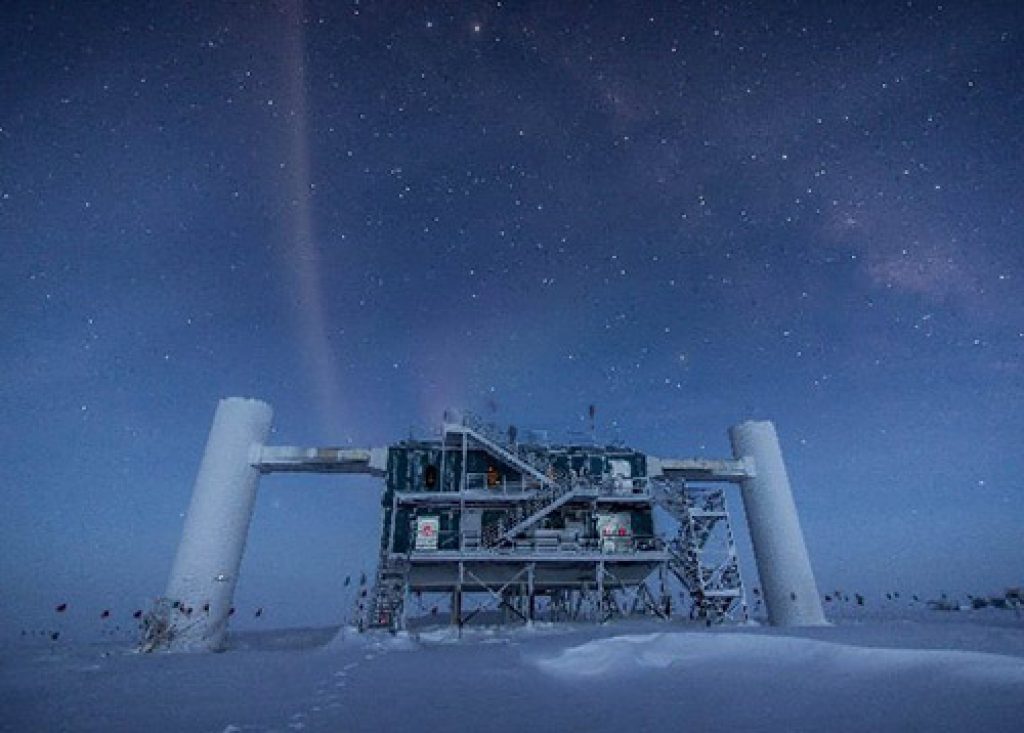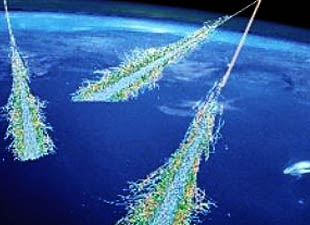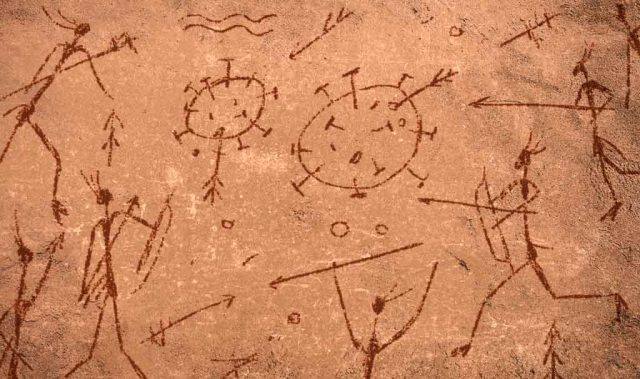
AsianScientist (Nov. 26, 2013) – An international team of scientists has announced the first solid evidence for astrophysical neutrinos – very high-energy particles coming from distant regions of our galaxy or further – which will lead to new ways of exploring the universe.
Published in the journal Science, the scientists reported the observation of 28 very high-energy ‘particle events’ and estimate about half of these have come from distant, as yet unidentified, highly energetic sources.
“This has opened a new window on the Universe,” said Dr. Gary Hill, ARC Future Fellow in the University of Adelaide’s School of Chemistry and Physics. “This discovery makes way for a new type of astronomy that we can use to probe the far reaches of the galaxy and beyond.”
The neutrinos were observed between May 2010 and May 2012 at the IceCube Neutrino Observatory, a particle detector buried in the Antarctic ice at the South Pole. It is operated by the IceCube Collaboration of 250 physicists and engineers from the US, Germany, Sweden, Belgium, Switzerland, Japan, Canada, UK, Korea, New Zealand and Australia, and is led by the University of Wisconsin-Madison.
“This is the first indication of high-energy neutrinos coming from outside our solar system,” said Professor Francis Halzen, IceCube principal investigator and professor of Physics at the University of Wisconsin-Madison (UW-Madison). “It is gratifying to finally see what we have been looking for.”
Neutrinos are nearly massless subatomic particles. Because they rarely interact with matter, they can carry information about the workings of the highest-energy and most distant phenomena in the universe.
Billions of neutrinos pass through every square centimeter of the Earth every second, but the vast majority originates either in the Sun or in the Earth’s atmosphere. Astrophysical neutrinos are more rare and have long been theorized to provide insights into potential sources of cosmic rays, the highest energy particles ever observed.
Hill spent seven summers in Antarctica overseeing the deployment of strings of optical detectors embedded in a cubic kilometer of ice beneath the South Pole.
“This observation opens up many opportunities for the Adelaide IceCube group,” said Hill. “We have already begun developing new methods to analyze incoming data with the goal of understanding the location and nature of the sources of these neutrinos.”
The article can be found at: IceCube Collaboration (2013) Evidence for High-Energy Extraterrestrial Neutrinos at the IceCube Detector.
——
Source: University of Adelaide; Photo: Felipe Pedreros/National Science Foundation.
Disclaimer: This article does not necessarily reflect the views of AsianScientist or its staff.












